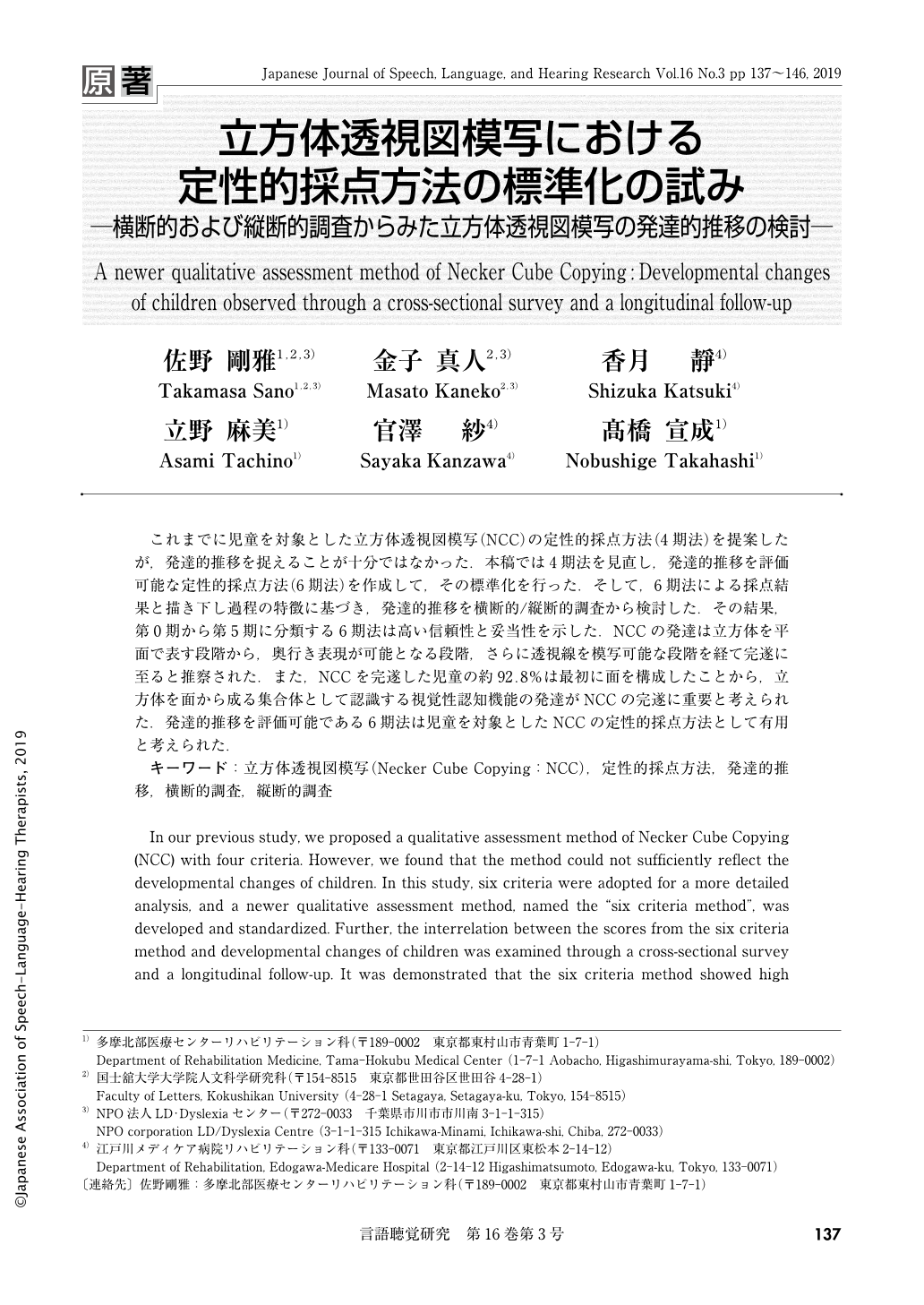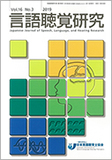Japanese
English
- 有料閲覧
- Abstract 文献概要
- 1ページ目 Look Inside
- 参考文献 Reference
- サイト内被引用 Cited by
これまでに児童を対象とした立方体透視図模写(NCC)の定性的採点方法(4期法)を提案したが,発達的推移を捉えることが十分ではなかった.本稿では4期法を見直し,発達的推移を評価可能な定性的採点方法(6期法)を作成して,その標準化を行った.そして,6期法による採点結果と描き下し過程の特徴に基づき,発達的推移を横断的/縦断的調査から検討した.その結果,第0期から第5期に分類する6期法は高い信頼性と妥当性を示した.NCCの発達は立方体を平面で表す段階から,奥行き表現が可能となる段階,さらに透視線を模写可能な段階を経て完遂に至ると推察された.また,NCCを完遂した児童の約92.8%は最初に面を構成したことから,立方体を面から成る集合体として認識する視覚性認知機能の発達がNCCの完遂に重要と考えられた.発達的推移を評価可能である6期法は児童を対象としたNCCの定性的採点方法として有用と考えられた.
In our previous study, we proposed a qualitative assessment method of Necker Cube Copying (NCC) with four criteria. However, we found that the method could not sufficiently reflect the developmental changes of children. In this study, six criteria were adopted for a more detailed analysis, and a newer qualitative assessment method, named the "six criteria method", was developed and standardized. Further, the interrelation between the scores from the six criteria method and developmental changes of children was examined through a cross-sectional survey and a longitudinal follow-up. It was demonstrated that the six criteria method showed high reliability and validity. Based on our observation, we assumed that children's ability to perform NCC progresses in the following way: first, they are unable to draw an image with depth; then, they gradually learn to draw depth; next, they acquire the ability to draw perspective lines; and finally, they are able to draw a complete cube. Approximately 92.8% of the children who accomplished NCC drew a quadrilateral first, which suggests that the ability to visually recognize that a cube consists of a combination of quadrilaterals is essential for successful completion of NCC. We conclude that the six criteria method is useful not only to categorize NCC integrity but also to assess developmental changes of children.

Copyright © 2019, Japanese Association of Speech-Language-Hearing Therapists. All rights reserved.


